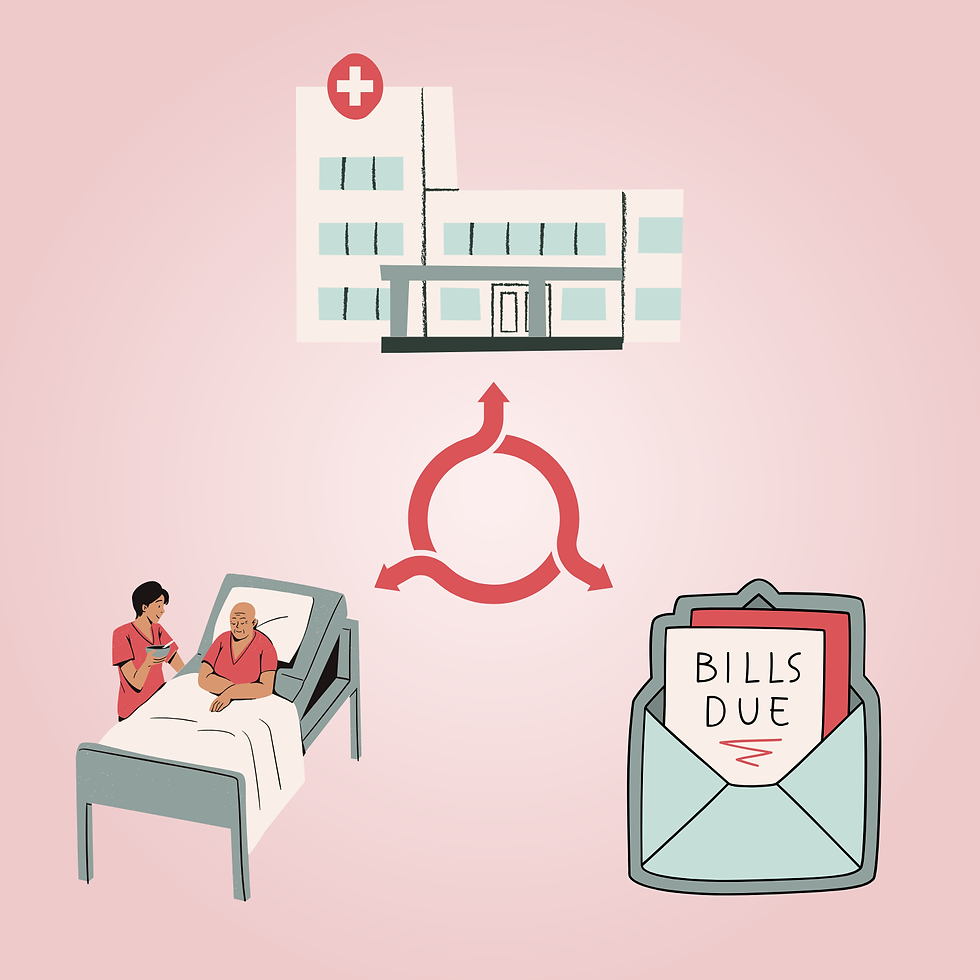Inequality in Death: Examining Socioeconomic Disparities in End-of-Life Care
- Sarah Croog
- Mar 24, 2024
- 2 min read

Extensive research has shown that socioeconomic status impacts health along a gradient: those with less financial resources and social capital have poorer health outcomes compared to those who stand towards the top of the gradient. While this has been researched for decades, discussion on the relationship between socioeconomic status and the quality of end-of-life care patients receive is somewhat lacking but increasingly pertinent. As life expectancy in the United States increases, so does the prevalence of chronic conditions, creating urgency in the discussion of equitable palliative care (1).
One of the most significant barriers to receiving quality palliative and end-of-life care is financial. Adults below a certain level of income are eligible for Medicaid, and adults over the age of 65 can be covered by Medicare. While government-funded insurance has certainly provided many individuals with the ability to access necessary treatment, it is certainly not a cure for health disparities in the United States. Certain Medicaid policies are decided by states: each state may decide whether to cover hospice care, and they may create guidelines for hospice care eligibility (2). If an individual covered by Medicaid lives in a state in which hospice is not covered by their insurance, and they do not have the financial resources to pay out-of-pocket, they are blocked from accessing care that would greatly improve their quality of life, providing comfort in the face of terminal illness. Furthermore, there are a great number of individuals who do not qualify for Medicaid but are still unable to afford adequate healthcare, including palliative and end-of-life care. In North Carolina alone, there are an estimated 208,000 adults in this position (3).
Action must be taken to expand access to end of life care within low-income communities. Broadening the requirements for Medicaid eligibility would alleviate the financial strain posed by palliative care for those who do not currently meet the guidelines for Medicaid coverage, but cannot afford hospice on their own (2). Additionally, establishing hospice care as an essential resource that must be covered by Medicaid in all states would improve access to end-of-life care without the threat of a policy change revoking the ability to seek palliative support (2).
Expanding Medicaid eligibility and establishing Medicaid coverage for hospice care on a national level are necessary interventions that have the potential to greatly decrease suffering among low-income individuals at the end of their lives. Nobody deserves to die in pain solely due to the affordability and accessibility of palliative care, and policy-level changes must be enacted to prevent this suffering.
Reviwed by Kate Lee
Graphic by Sonali Patel
References
Ansah, J.P. and Chiu, C.T. (2022). Projecting the chronic disease burden among the adult population in the United States using a multi-state population model. Frontiers in Public Health, 10(1082183). 10.3389/fpubh.2022.1082183.
Wachterman, M.W. and Sommers, B.D. (2021). Dying Poor in the US—Disparities in End-of-Life Care. JAMA Network, 325(5), 415-500. 10.1001/jama.2020.17773
Spencer, J. C., Gertner, A.K., and Silberman, P.J. (2019). Health Status and Access to Care for the North Carolina Medicaid Gap Population. North Carolina Medical Journal, 80(5), 269-275. 10.18043/ncm.80.5.269



Comments